Below are three photographs from my morning saunter through the fog along Piney Woods Church Road….
Into the Fog

The Old Tulip Poplar

Two Cedars

Below are three photographs from my morning saunter through the fog along Piney Woods Church Road….
Into the Fog

The Old Tulip Poplar

Two Cedars

A little brown bird perches atop a pasture fencepost on a foggy morning along Piney Woods Church Road.
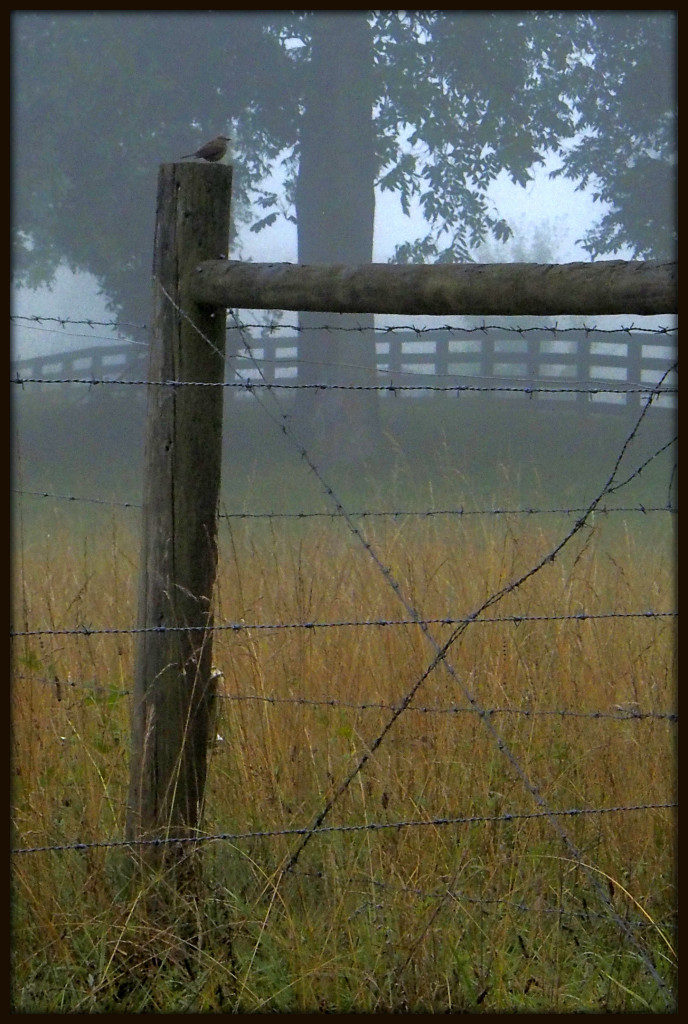
I photographed this seed head of a Two-Flowered Cynthia (Krigia biflora) on my morning walk today. Even though the flower is past bloom, and most of the seeds have blown away, it enchants me still.
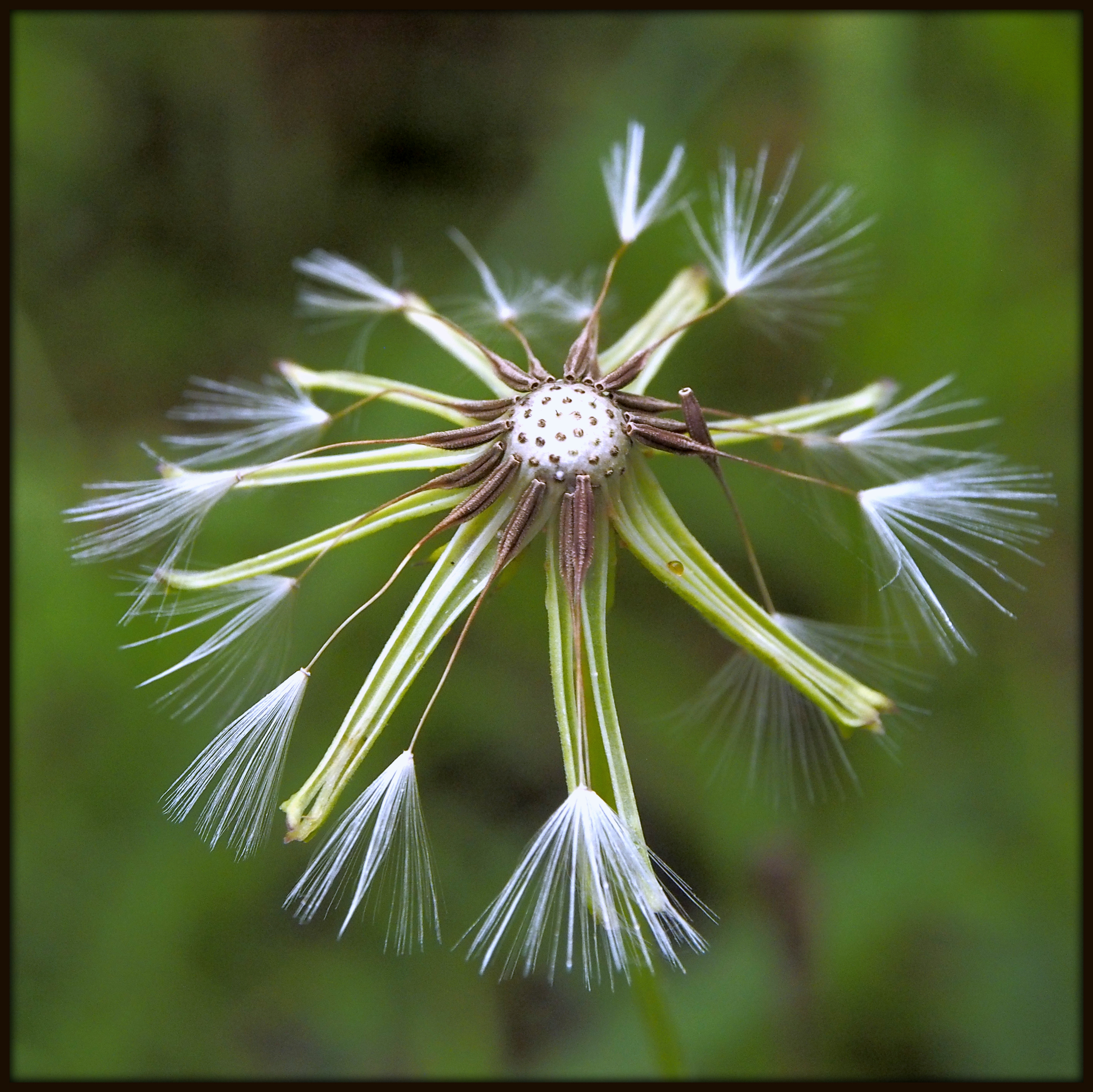
On my morning fog-filled walk, I glimpsed at least half a dozen spiderwebs accentuated by the mist. This one was particularly striking: a chaotic tangle of webs above, and a carefully-constructed geometric web below — order and disorder coexisting in one image.
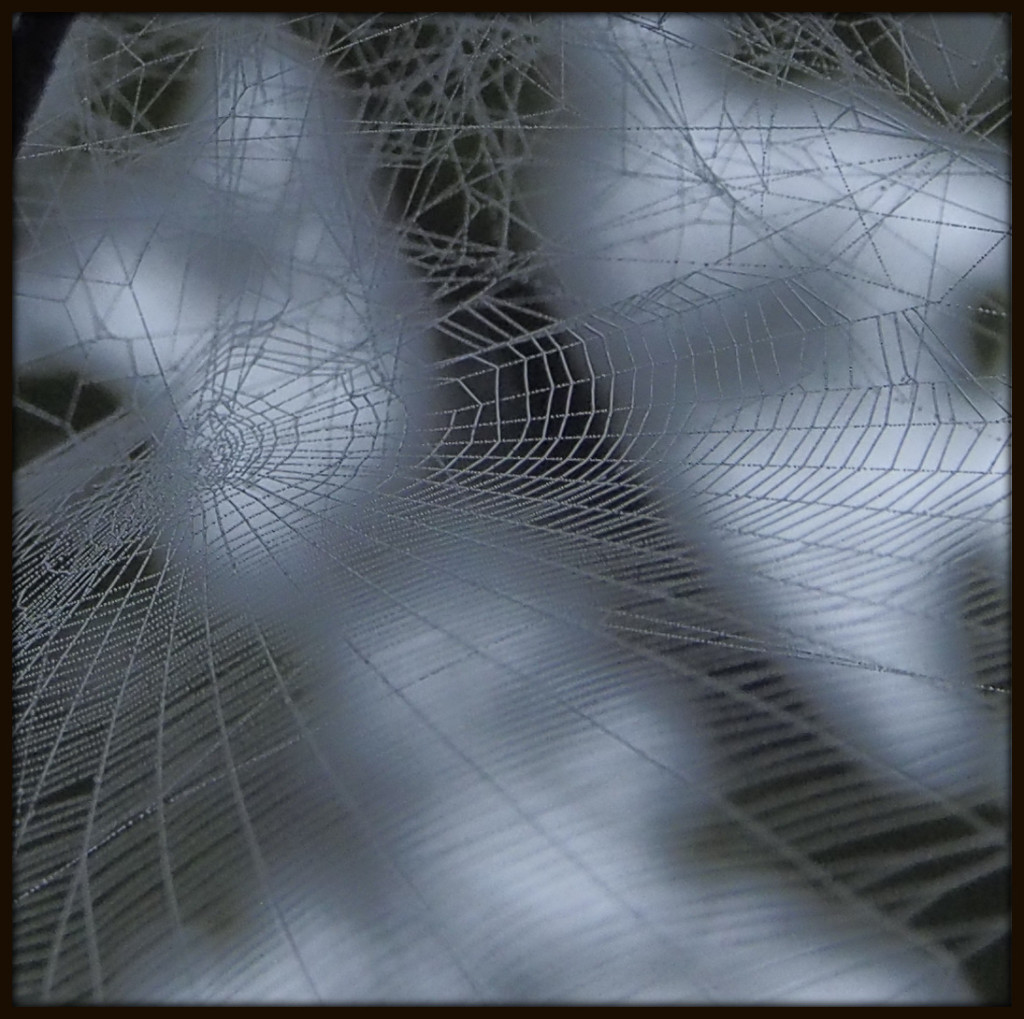
Last night’s sunset was spectacular, a pyrotechnic display of vivid colors and dramatic clouds. Dogs in tow and camera at home, I missed the opportunity to photograph it. So I am gratified that I actually got up this morning to the alarm (at an hour I won’t confess, since many are already en route to work by then) and decided to set out for Piney Woods Church Road despite overcast skies. The reward was a dense fog that offered marvelous photographic opportunities. The spider webs were festooned with misty droplets; looking through them to the trees beyond, they cast a diaphanous veil upon the scene.
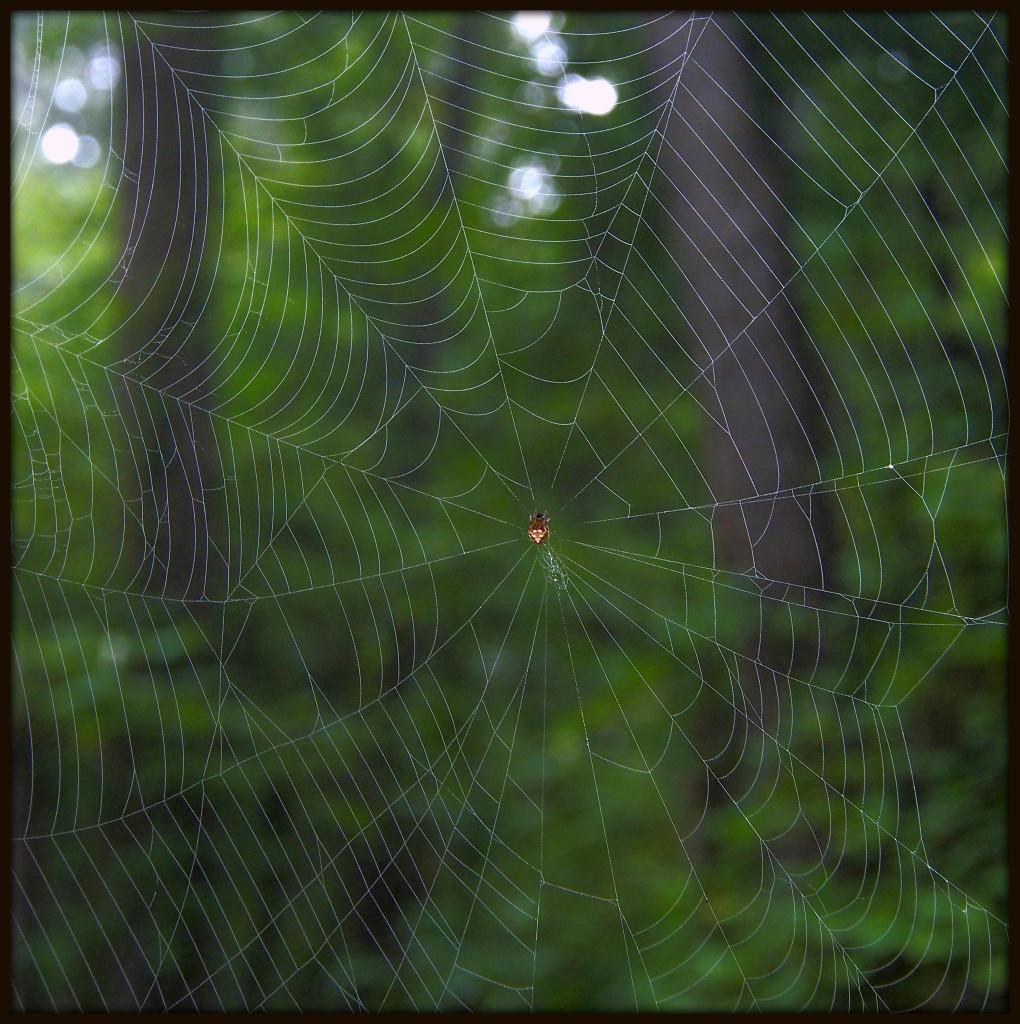
I ventured out to Piney Woods Church Road today between rainstorms. It was wonderful to see water everywhere — in shallow puddles on the roadbed, in droplets on leaves, and suspended from twigs like this one. The humidity was amazing — I dripped as much as the vegetation did — and quite a few insects were about, including an odd little treehopper or leafhopper that I am still trying to identify. Heading toward Hutcheson Ferry Road, I advanced into a mix of blue sky and clouds. Returning toward Rico Road, I headed into a gray cloud. The rain began while I was on Rico Road, just about to turn up my driveway. But for the most part it was a gentle, nourishing rain, a rarity in these Southern summer months.
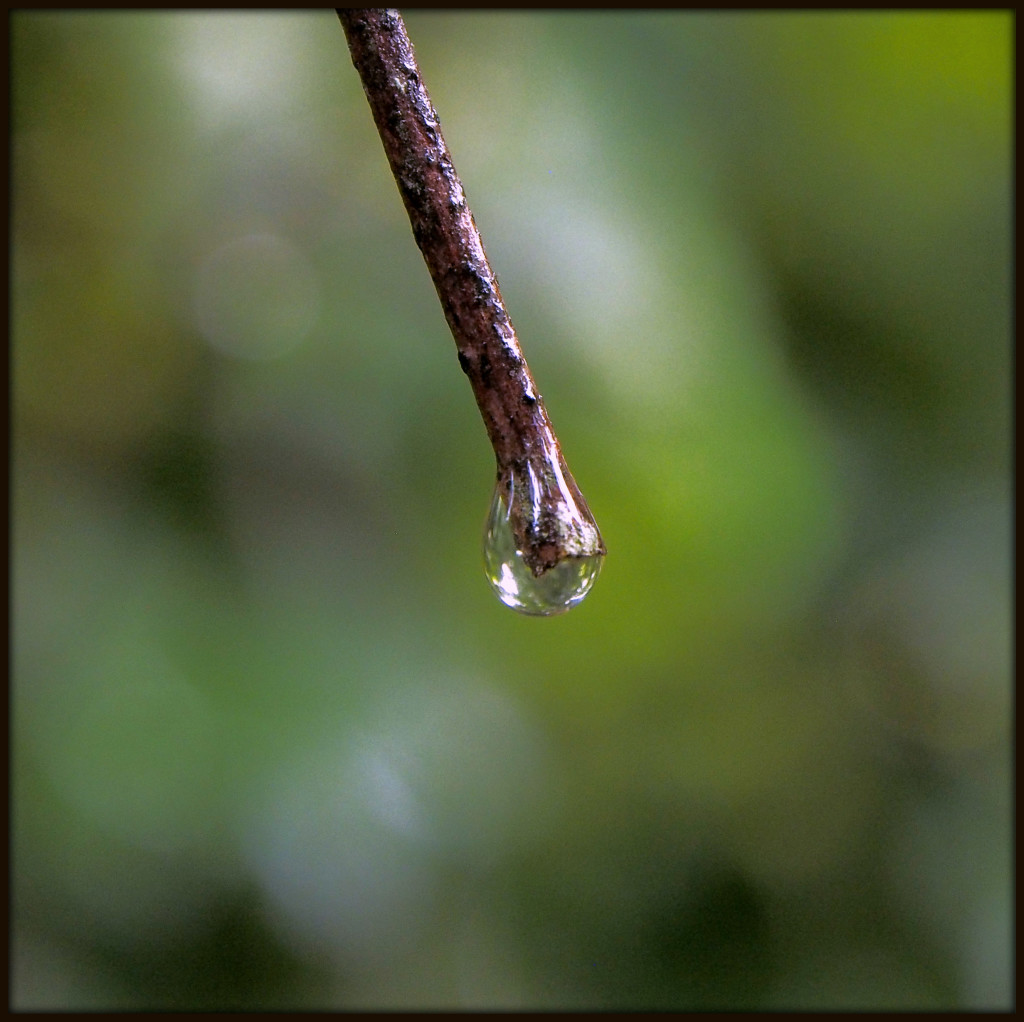
On my way to Piney Woods Church Road today, I paid more attention than usual to Rico roadside. Part of that was self-preservation — cars and trucks were flying by at near-lightning speeds, drivers miles away, ensconced in their own words. Part was because I was looking for a wildflower I had seen the day before, and even after locating it, I maintained my same level of attention to my surroundings. The result was a delightful discovery of a white and creamy yellow moth, about an inch long, motionless in plain view. Later I learned that this particular moth, a Delicate Cycnia or Dogbane Tiger Moth (Cycnia tenera) feeds on dogbanes and milkweeds as a caterpillar, taking into its body the same cardiac glycoside that makes Monarch Butterflies immune to predators. With little to fear from the skies, this particular moth did not so much as twitch, even when I drew my camera up close to take this photograph.

Over the past few months, since the trees have come into leaf along Piney Woods Church Road, I have been noticing Evidence for Elves. As I glance at the saplings of sweetgum and tulip poplar that line the roadway, I can quickly find a dozen leaves with holes in them, and fascicles (bundles) of loblolly pine needles suspended from each hole. Clearly, something has been putting a lot of energy into using pine needles as needles, poking holes in leaves with them and then letting them hang suspended, like a half-hearted attempt at an Andy Goldsworthy sculpture. The prosaic explanation, of course, is that the wind dislodges the pine needles from high up in the trees, and the velocity they obtain as the fall due to the acceleration caused by gravity is sufficient for them to pierce holes through any leaves they might encounter on their downward trajectory. The result is mysterious in a relatively subdued way — hardly akin to Stonehenge, and not overly photogenic, for that matter (the image below is my best attempt). Still, I find the windfall model entirely unsatisfying. It is far too prosaic. I much prefer the image of elves wandering the countryside, bored because no one believes in them or pays attention to them anymore, filling their spare afternoon hours by poking holes in leaves with bundles of needles, leaving their handiwork behind as a sign of their passage.

We are headed for drought, I fear, though the Georgia Drought Monitor still indicates otherwise. It has been many days without rain, and after some lovely dry and pleasant afternoons, the humidity has returned. Today, at last, cloud-filled skies came back, as well. I watched eagerly as Doppler Radar at Weather.com indicated a line of storms building; I could hear occasional thunder rumbling outside. Alas, the line formed just south of where I live; indeed, my house is close to the northern edge of the rainfall. The storms lingered as steady showers in some areas, including the spot in this photograph. But somehow, they never reached Piney Woods Church Road. As I walked back home, a pickup truck rolled by, leaving a cloud of road dust in its wake. At least it’s raining somewhere….
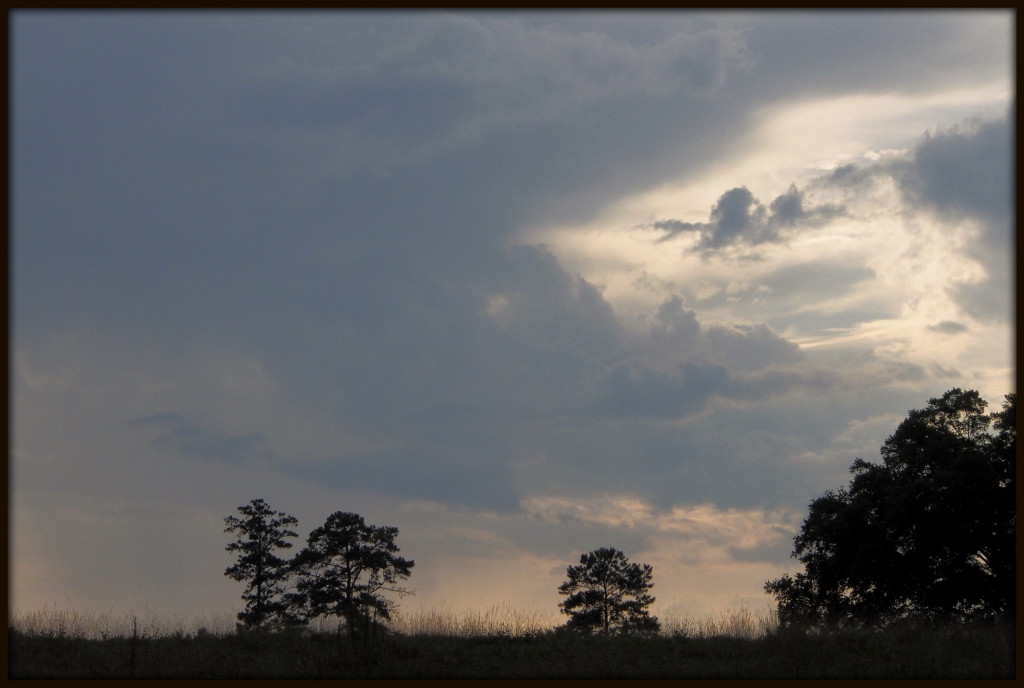
On my way back home today, I walked along the forest edge on Rico Road. Glancing down, I noticed a number of pale white flowers with a pinkish tinge. The flowers indicate a pea plant of some kind, but most of the roadside peas are flowering vines, which is not the case here. I searched my plant ID books and have sought help from experts via Facebook. So far, no answer. It is a lovely flower, though, and well worthy of a blog post.
The very next day, I was able to confirm that it is Spiked Hoary Pea (Tephrosia spicata), a native of the Southeast and fairly common along roadsides.
